Our Daily Bread Recipe
My standard bread recipe is simple. It is simple because I make it during the week while juggling work, kids, and dinner. The primary requirement for this bread recipe is that the process is reproducible without maths.
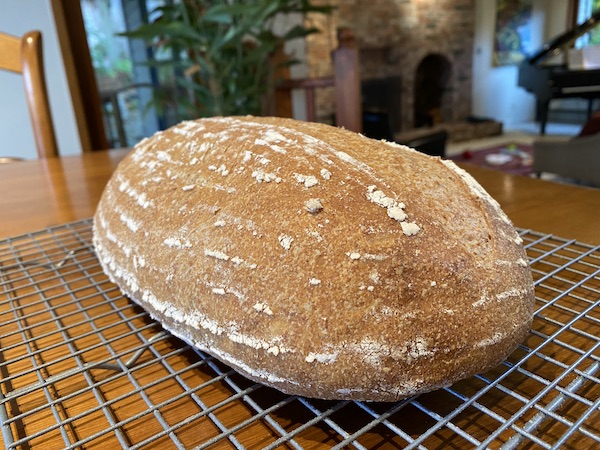 My standard bread recipe is simple. It is simple because I make it during the week while juggling work, kids, and dinner. The primary requirement for this bread recipe is that the process is reproducible without maths. The second requirement is that the flour bill is flexible and the process constant. I want to swap any grain for any other without having to tweak hydration levels and the like. Meaning the hydration levels are high but not too high and specialty flours are low but not too low. Cynically, it is trying to be the crossover SUV of bread recipes. And here it is.
My standard bread recipe is simple. It is simple because I make it during the week while juggling work, kids, and dinner. The primary requirement for this bread recipe is that the process is reproducible without maths. The second requirement is that the flour bill is flexible and the process constant. I want to swap any grain for any other without having to tweak hydration levels and the like. Meaning the hydration levels are high but not too high and specialty flours are low but not too low. Cynically, it is trying to be the crossover SUV of bread recipes. And here it is.
Passive Analytics Collection - A Strategy
I've come to learn that collecting application metrics is tricky to get right. Developer needs, product needs, design needs, and senior management needs differ. There is no one-size-fits-all solution to gathering and organizing those metrics.
I’ve come to learn that collecting application metrics is tricky to get right. Developer needs, product needs, design needs, and senior management needs differ. There is no one-size-fits-all solution to gathering and organizing those metrics. A consistent theme throughout my career has been that while we have the best intentions when collecting UI interaction data, we rarely provide the depth of data sufficient to answer critical business questions from product and design. Furthermore, without a generalized approach to metrics gathering, metrics tend be logged explicitely, in code, for every desired action/click/etc. This post explores a generalized strategy for collecting UI metrics that is both clean and comprehensive.
Standard Preferment
I've been experimenting with preferments lately using a poolish left to sit overnight and have determined that the quality of the bread, in nearly all aspects, is superior to the same bread made without one.
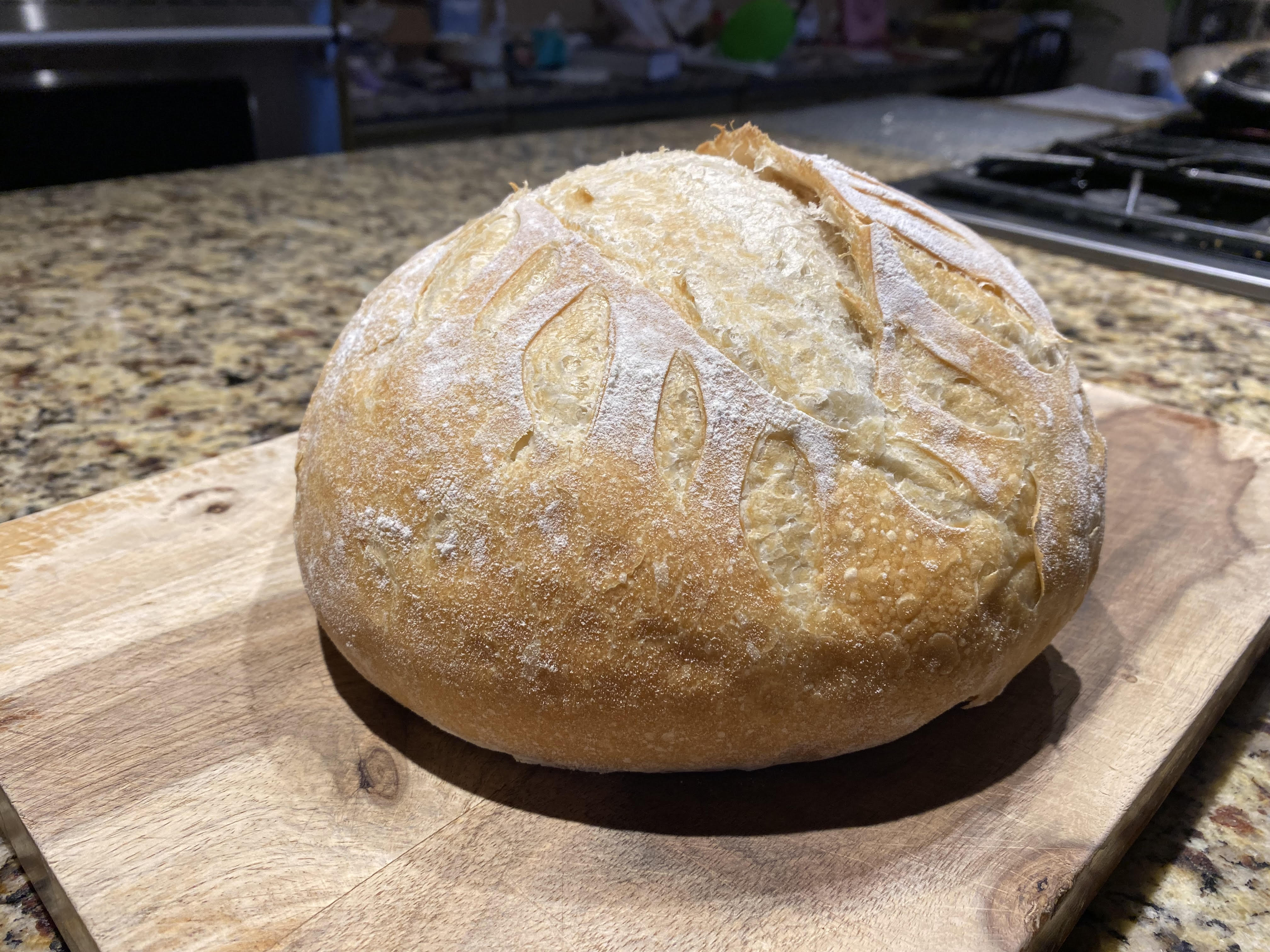 I’ve been experimenting with preferments lately using a poolish left to sit overnight and have determined that the quality of the bread, in nearly all aspects, is superior to the same bread made without one. Starting with the taste, it makes a much more complex flavor. I’m not sure how I would describe the taste difference, but it has a deeper taste than bread that hasn’t had time to develop. Working with the dough is also a lot easier. The dough is much stronger and the gluten structure feels more developed. Finally, the dough seems more predictable; my bulk fermentation times and oven rise have both been more predictable.
I’ve been experimenting with preferments lately using a poolish left to sit overnight and have determined that the quality of the bread, in nearly all aspects, is superior to the same bread made without one. Starting with the taste, it makes a much more complex flavor. I’m not sure how I would describe the taste difference, but it has a deeper taste than bread that hasn’t had time to develop. Working with the dough is also a lot easier. The dough is much stronger and the gluten structure feels more developed. Finally, the dough seems more predictable; my bulk fermentation times and oven rise have both been more predictable.
Basic Dill Pickles
My favourite purveyor of pickles closed up shop recently. Their product, while expensive, spoiled the very idea of store bought pickles for my family forever.
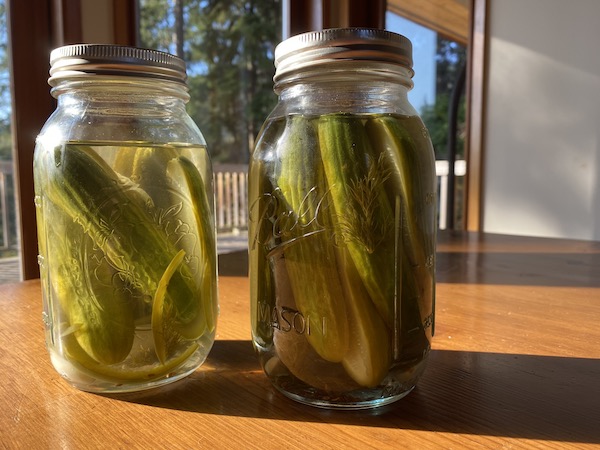 My favourite purveyor of pickles closed up shop recently. Their product, while expensive, spoiled the very idea of store bought pickles for my family forever. With their shop shuttered and my kids clammering for decent pickles, I was left to go it alone on a grand pickle excursion earlier this year. Turns out pickles are trivial to get right. Thanks to a short turnaround time it is also trivially simple and cost effective to experiment. There is no secret, no tricks, all that is needed are a combination of the right ingredients in the right amounts. Here is what I’ve found to be a popular dill recipe among my family.
My favourite purveyor of pickles closed up shop recently. Their product, while expensive, spoiled the very idea of store bought pickles for my family forever. With their shop shuttered and my kids clammering for decent pickles, I was left to go it alone on a grand pickle excursion earlier this year. Turns out pickles are trivial to get right. Thanks to a short turnaround time it is also trivially simple and cost effective to experiment. There is no secret, no tricks, all that is needed are a combination of the right ingredients in the right amounts. Here is what I’ve found to be a popular dill recipe among my family.
Cinnamon Raisin Oatmeal Loaf
I've spent years trying to make a decent oatmeal raisin loaf. I've finally succeeded and I couldn't be more pleased.
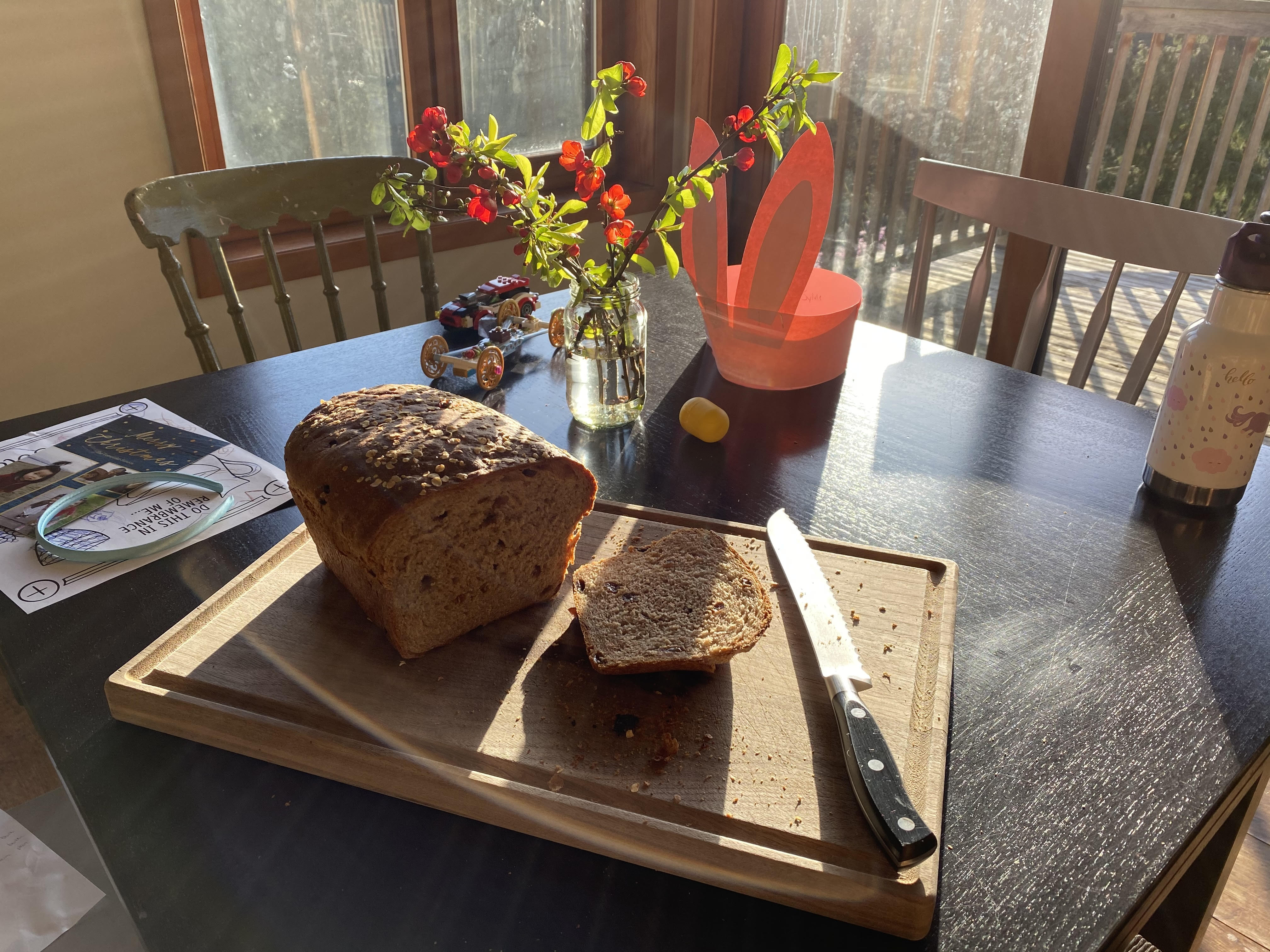 I’ve spent years trying to make a decent oatmeal raisin loaf. I’ve finally succeeded and I couldn’t be more pleased. This loaf is quite sweet and best for breakfast with jam or butter. I haven’t yet tried french toast with it yet but I imagine it would work well. For this loaf be sure to pay attention to process and refrain from hastening rise times. Soaking the oats and raisins in water is critical to creating the correct texture and ensuring nothing dries out or burns near the surface.
I’ve spent years trying to make a decent oatmeal raisin loaf. I’ve finally succeeded and I couldn’t be more pleased. This loaf is quite sweet and best for breakfast with jam or butter. I haven’t yet tried french toast with it yet but I imagine it would work well. For this loaf be sure to pay attention to process and refrain from hastening rise times. Soaking the oats and raisins in water is critical to creating the correct texture and ensuring nothing dries out or burns near the surface.
Motivation begets motivation
The older I get the more I find that motivation is the limiting factor to starting just about anything. There seems to be a minimum amount of motivational momentum or fuel required to learn something new.
The older I get the more I find that motivation is the limiting factor to starting just about anything. There seems to be a minimum amount of motivational momentum or fuel required to learn something new. Paradoxically, the only method I’ve found to generate motivation is through motivation. I don’t think I’m unique in this either. Looking around it seems the older and more comfortable humans get the less motivation we have to challenge ourselves either physically or mentally. The rest of this post is simply a prattling on my discoveries regarding motivation.
The Trouble with Smart Home
This year I used the extra COVID time at home to experiment with smart home products. The goal was to identify rooms and spaces I used often, make them smart~ish, then simply live with it for a while and develop an opinion on the product space (e.g. setup, maintenance, reliability, troubleshooting, value-add, etc). There are plenty of obvious drawbacks to the tech including fragmented apps to control the devices and cost to name a couple. However, I found three limiting factors that no one warned me about but make these products no smarter or superior to the items replaced: my wife and two kids.
How to make great pizza sauce
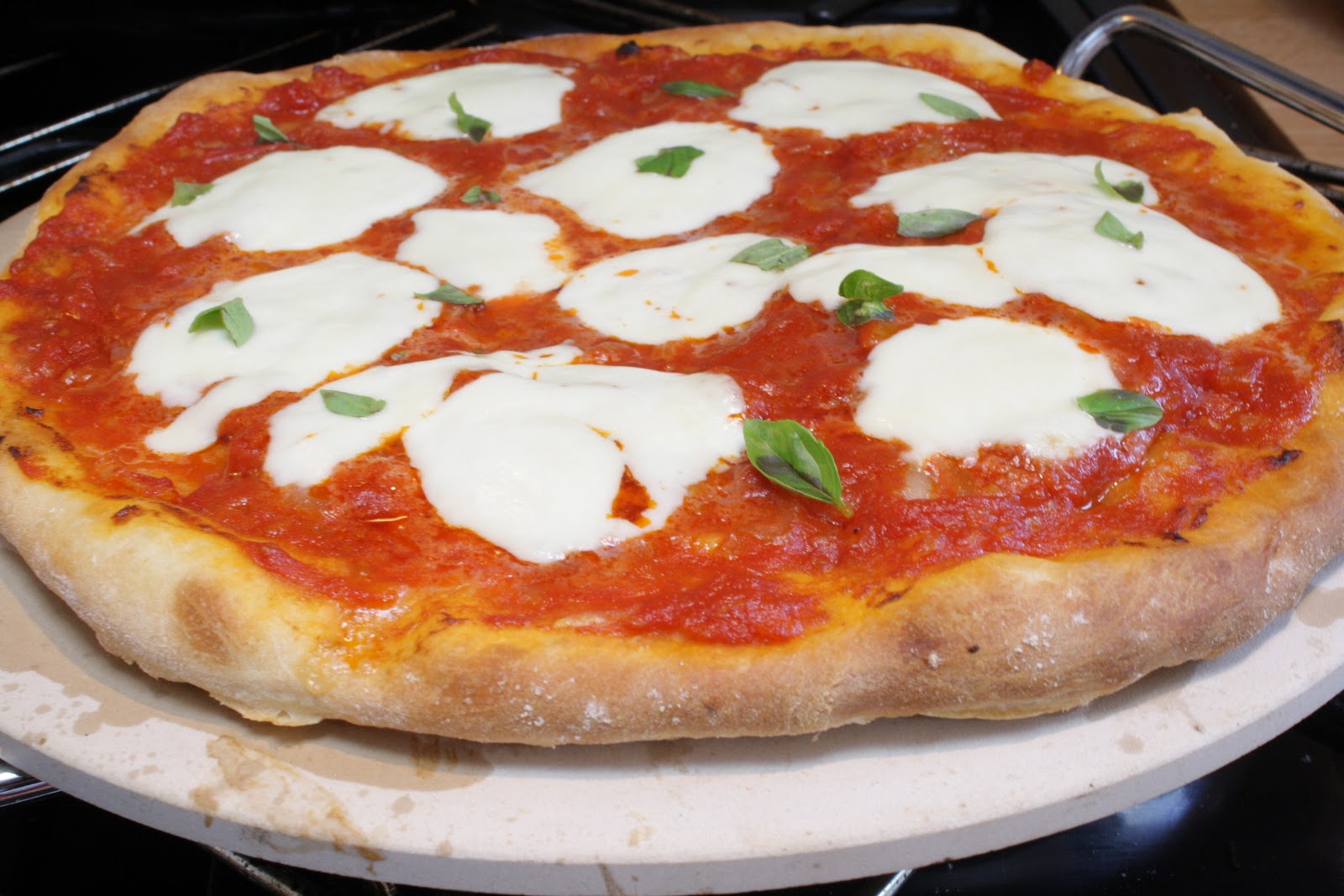
There isn’t a secret to pizza and pasta sauce. It really is dead simple to make and requires very few ingredients. The right ingredients however are important. So if you leave with just one takeaway from this blog post, let it be this: use plum tomatoes. Only plum tomatoes will do and nothing else is acceptable, especially if you’re using canned tomatoes. So on to the recipe:
What I'm Drinking: Bearface
As fall turns to winter, my liquor cabinet fills up with brown liquors, usually scotch. This year I decided to fill it with whiskies of the Canadian variety. The cabinet was looking pretty bare, so the purchase of a cheap everyday whiskey was prudent. I know nothing about Canadian whiskies, so I blindly perused the shelves and picked bearface based purely on packaging and gut feel.
I was surprised at how easy drinking the whiskey was. From the lips to the throat, it went down smooth with very little burn. As it goes down I get a lot of oak, a bit of spice, and maybe stone-fruit. The finish is a heavy vanilla. I did a bit of research and I was surprised to find out it was a 100% corn whiskey. So the finishing really makes this whiskey. It is finished in three different types of barrels, one of which is a wine cask. The process is well documented so I’ll spare the reader any details, but it seems quite complicated and that shines in the final product.
Working Remotely: Lessons Learned
I’ve worked my entire career in tech from either a satellite office, as a remote employee, or a combination of the two. Through several life events, working remotely has been both a blessing and a curse, and this post is to highlight some of the ups and downs of working remotely as a tech employee as well some lessons learned along the way.
To set the stage, my experience has been with two of the four FANG companies (doesn’t really matter which ones, just that these are big shops), working in satellite offices, for remote teams, but in major US and Canadian cities. In both cases, the satellite offices I worked in were small at the outset but grew to exert a significant presence over time. The first satellite office was in New York. The mothership was in the Valley and I was one of the many tech kids flying the JFK to SFO circuit on a frequent basis. This brings me to point number one.